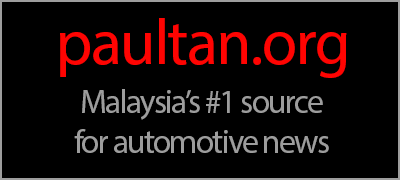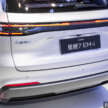Just over a month after it was revealed, the Geely Galaxy A7 has now been launched in China, sitting between the L6 and Starshine 8 as the brand’s D-segment sedan offering. With this, we now have full details on the car’s fuel-sipping plug-in hybrid system as well as official pricing.
As previously reported, the A7 is powered exclusively by the latest version of Geely’s efficiency-biased EM-i powertrain. This uses a 1.5 litre BHE15PFI naturally-aspirated four-cylinder engine that we’re expecting to surface (in non-hybrid form) in the new Saga MC3, producing 111 PS and 136 Nm of torque.
Compared to the unit in the Starship 7/Starray EM-i, the Atkinson-cycle mill receives a redesigned combustion chamber for increased tumble flow and several friction-reducing technologies, as well as a variable-displacement oil pump and optimised thermal management. The result is the world’s highest thermal efficiency at 47.26%, versus 46.6% for its SUV sibling.
The P3 drive motor (integrated into the 11-to-1 electrified single-speed dedicated hybrid transmission), meanwhile, is 20 PS powerful than the Starray EM-i’s, producing 238 PS and 262 Nm. This enables the car to get from zero to 100 km/h in 7.1 seconds on its way to a top speed of 190 km/h.
However, the biggest breakthrough is the second-generation cloud-based, AI-powered energy management system via Geely’s Xingrui Intelligent Computing Center 2.0, the latter having 23.5E FLOPs of computing power. The system is claimed to be trained on over 1,000 scenarios, ensuring the car is able to deploy both petrol and electrical energy more efficiently in any driving condition without the need to use maps.
So equipped, the A7 is able to deliver a fuel consumption figure of just 2.67 litres per 100 km on the China’s (admittedly lenient) CLTC cycle. This is with the smaller of the two available lithium iron phosphate batteries – a 8.5 kWh CALB pack that delivers a pure electric range of 70 km.
Higher-end models receive an 18.4 kWh CATL unit that pushes up the EV range to 150 km but also increases fuel consumption to 2.8 litres per 100 km, while delivering a total range of over 2,100 km. They also gain DC fast charging capability at up to 37 kW, topping up the pack from 30 to 80% in 18 minutes. As for AC charging, that is limited to just 3.3 kW, although it can discharge that amount going back out through its vehicle-to-load (V2L) function.
Smaller and more obviously built to a price than the higher-end Starshine 8, the A7 sports a more conventional three-box profile and six-window glasshouse compared to its sibling’s sleeker Porsche Taycan-esque fastback shape. But this is still a big car, measuring 4,918 mm long, 1,905 mm wide and 1,495 mm tall, with a wheelbase of 2,845 mm.
Up front, the full-width light bar – made up of 196 LED, no less – is integrated into the projector LED headlights, Galaxy M9 style, and features a ripple effect with a segmented centre section that rather cleverly reflects the rectangular Geely Galaxy badge above.
Another cue carried over from the M9 is the conventional pull-type door handles rather than the flush pop-out items found elsewhere in the Galaxy lineup; despite this, a claimed 21 aerodynamic features such as an active grille shutter ensure a drag coefficient as low as 0.229. Rounding off the exterior is the full-width taillight bar with the aforementioned ripple effect, inspired by the sun rising over mountains.
Inside, the greater simplicity continues with larger, physically-adjustable air vents, sitting amidst a tall centre console, a Proton eMas 7-style two-spoke steering wheel and dual freestanding displays – a 10.25-inch digital instrument display and a 15.4-inch infotainment touchscreen running on the Flyme Auto operating system.
The car can also be had with a a 16.6-inch head-up display, a 16-speaker, 1,000-watt Flyme Audio sound system (with headrest speakers and “floating” tweeters) and a 50-watt Qi wireless charger. Elsewhere, you get 256-colour ambient lighting in the dashboard and door cards and “marshmallow” seats with 14-point “acupuncture” massage for the front seats.
Safety-wise, the A7 comes as standard with six airbags and Geely’s latest G-Pilot suite of driver assistance systems that enables highly-autonomous highway and city driving. Evasive steering assist, pedal misapplication control, memory-based parking assist and low-speed autonomous emergency braking will be added through an over-the-air update.
The Geely Galaxy A7 is priced starting at 103,800 yuan (RM61,600), with larger battery models starting at 119,800 yuan (RM71,100) and topping out at 133,800 yuan (RM79,400). Geely is touting the car as a “global” car, so could we see it come to Malaysia as a Proton eMas model to join the eMas 7 and the forthcoming eMas 5 and eMas 7 PHEV?

















































































